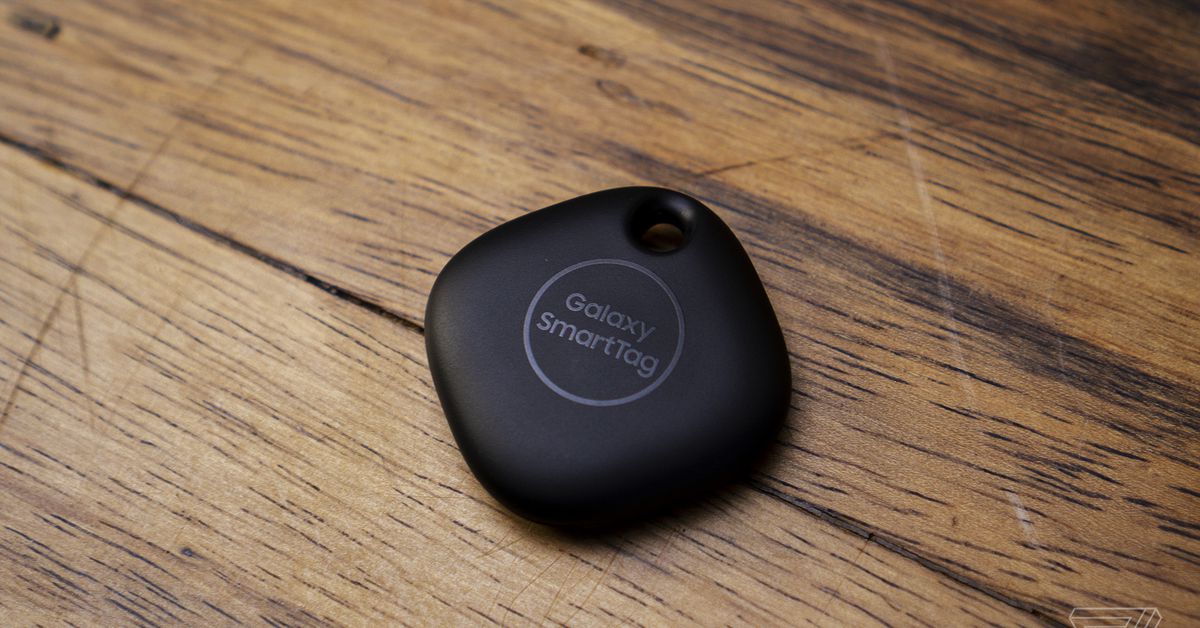Fast Company Interview: Jaeyong Jeong, Samsung’s VP of Hardware and Head of SmartThings Asia
If you have a lot of movable items at home, in the office or at the hospital and need to be able to track them down quickly then a Galaxy SmartTag is a great option.
Interview Fastcompany Jung Galaxy Smarttag Smartthings can connect to the SmartThings app and then use Bluetooth Low Energy to send a pulse signal to a nearby smartphone. When that phone is in range it uses SmartThings Find to help you locate your item.
Jaeyong Jeong
Jaeyong Jeong is the VP of Hardware and Head of SmartThings Asia, a position he’s held since April 2015. As a Samsung exec, it’s not surprising that he knows his stuff. We got him on the phone to learn more about the aforementioned Galaxy SmartTag and its lesser known, but no less impressive, cousin, the aptly named Galaxy SmartTag+.
The most awe inspiring thing about this innovative little tag is the fact that it’s able to connect with other devices, like the Samsung Galaxy Note 2 and S7 smartphones, to help you find your belongings when you need them most. The most recent iteration of the Galaxy SmartTag uses a combination of Bluetooth low energy (BLE) and ultra-wideband (UWB) technology to offer more accurate locating abilities. The aforementioned device also features an impressively long battery life and an encryption-detection-lock mechanism to keep your prized possessions safe from prying eyes.
The most important thing to remember when it comes to the best of the best is to make sure you choose the right one for your needs and budget, otherwise it may end up being a waste of time. Fortunately, Samsung is here to help! From finding your lost keys to tracking your pet’s whereabouts, the Samsung Galaxy SmartTag is ready to take you where you want to go.
SmartThings Asia
Samsung is on a mission to connect more devices and home appliances around the world than ever before, with the number of SmartThings users hitting 10 million as of September 12. The company is expanding its ecosystem with partnerships from other brands to help bolster connectivity.
As of this week, more than 300 companies are offering their products compatible with Samsung’s SmartThings platform. The South Korean electronics giant plans to expand its services to more than 3,000 smart devices and increase the number of users by double digits in five years, according to Vice Chairman Han Jong-hee.
Initially launched in 2018, SmartThings enables a range of small and large appliances from refrigerators and washing machines to air purifiers and dishwashers to be controlled with a smartphone app. The platform has grown to become a top player in the smart home market and is expected to reach 20 million devices by next year, according to a press release on Wednesday.
The company has been making strides in the area of sustainability, a growing concern among consumers who are increasingly seeking to reduce their impact on the environment. For instance, in June it announced its SmartThings HomeKit framework to make it easier for consumers to integrate third-party products with the company’s own devices.
In addition, it launched a new feature called “AI Energy Mode” that can provide up to 15% more energy savings for certain refrigerators and air conditioners. And it also teamed up with Patagonia to combat microplastic fibers that shed during laundry cycles and end up in waterways.
For example, you can set up a routine that shuts off lights, locks the door and lowers the temperature before going to bed. The device also supports Matter, a smart-home protocol that allows it to interact with a range of other technology from other companies.
Another major step forward was the introduction of a feature that helps locate your lost items, like keys and a phone, even when you’re not physically near them. It uses Bluetooth Low Energy (BLE) to transmit a signal that grows stronger as you get closer to the item, allowing you to find it with the tap of a button.
SmartThings Find
Misplacing an expensive gadget is never fun, but Samsung’s SmartThings Find app makes it easy to track down a lost Galaxy device. The service is available for all Samsung devices running Android 8 or later around the world and works on select Galaxy smartphones, earbuds, smartwatches and tablets.
Using Bluetooth Low Energy and UWB (ultra-wideband) technologies, users can easily locate a missing smartphone, tablet or earbud after registering it with SmartThings Find. Once a Galaxy device has been registered, it will show up on the app’s list of connected devices and will let you search for it via maps and Augmented Reality. You can also ring your phone and search nearby to locate it more quickly.
To use the feature, you need to first install the latest version of the SmartThings app on your Samsung Galaxy device. It will come pre-installed on some models, but you can download it from Google Play if you don’t already have it. The app will then ask for permissions to access your phone’s location.
Then, you’ll want to sign in with your Samsung account on the app. This is required to ensure that only your Samsung devices can access the service.
After signing in, the app will display a device list with icons for your devices. Tap on the icon of a particular device, and you’ll be shown a map that shows its exact location. The green bar will increase in intensity as you get closer to the object.
In addition to locating your Samsung devices, you can also use the app to find items in your house. It can even help you locate your pet.
Samsung is also expanding the service to tracking tags from early next year, which will allow you to find things beyond just Galaxy devices. These tags can be attached to any item, so you’ll be able to find things like keys or wallets when you lose them.
Samsung’s SmartThings Find app can also be used to create scenes that can be automated with the aid of SmartThings hardware. Scenes can then control appliances, lights and other devices in your home.
SmartThings Hub
Putting together a smart home can be tricky, especially when it comes to setting up your devices. You have to weigh the pros and cons of different platforms, decipher the various IoT protocols, and set up a central hub to connect all your devices to.
Samsung has made this process a little bit easier by putting a SmartThings hub inside of a wireless charger it unveiled at CES 2023. But the device has a few issues that could be deal breakers for power users who have multiple connected devices and want to keep them all synced up in case of a power outage.
The SmartThings Hub itself is pretty straightforward to use and connects with a wide variety of devices. It supports both Z-Wave and Zigbee radios, which means it can control hundreds of different components from manufacturers like Lutron, Leviton, Sylvania, Philips Hue, Ecobee, Honeywell, Schlage, Ring, Bose, and more.
You can use the SmartThings app to add your devices and sync them to the hub. Once they’re in the app, you can use them for scheduling and automation, as well as for remote access.
Another feature that’s been added to the new generation of the SmartThings hub is battery backup, which allows you to reconnect your devices if the power goes out. While it’s not a major feature, it’s an important one for users who have a lot of devices attached.
Moreover, the SmartThings Hub also includes an IR port and two auxiliary ports for devices like switches and outlets. These features make it a good choice for users who want to get started with a new smart home setup quickly and easily.
It’s a little pricier than its predecessor, but it offers more power and expandability. It is compatible with Z-Wave and Zigbee protocols, and has a built-in Z-Wave and Zigbee sensor that can detect things like leaks and window temperature.
While it’s not as robust or powerful as the new Nest Learning Thermostat, the Samsung SmartThings system can serve as a central command center for smart homes with a large number of devices. The system offers remote, scheduled, and automated control of a wide range of devices, and it even supports wired or wireless connectivity (gen 3 only).






